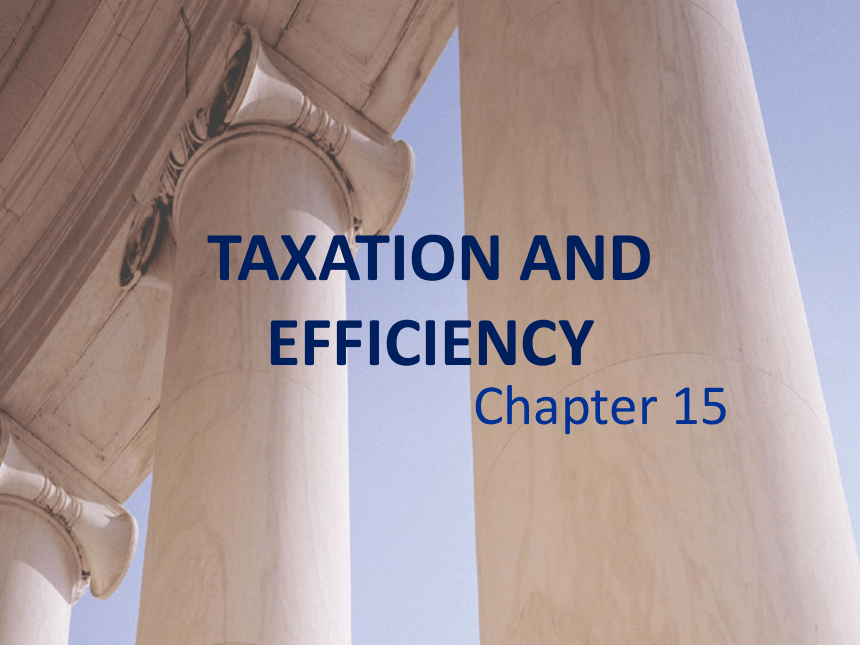(
课件网) TAXATION AND EFFICIENCY Chapter 15 Excess Burden Defined Pounds of corn per year Pounds of barley per year E1 B1 C1 D F A Cb Ca B0 Government levies tax on barley i 15-* Effect of Tax on Consumption Bundle Pounds of corn per year Pounds of barley per year E1 B1 C1 D F A Cb Ca B0 E2 i ii G 15-* Excess Burden of the Barley Tax Pounds of corn per year Pounds of barley per year E1 B1 C1 D F A Cb Ca B0 E2 i ii G H B3 M I Tax Revenues Equivalent variation 15-* Questions and Answers If lump sum taxes are so efficient, why aren’t they widely used Are there any results from welfare economics that would help us understand why excess burdens arise 15-* Questions and Answers Does an income tax entail an excess burden 15-* Questions and Answers Pounds of corn per year Pounds of barley per year C1 D F A Cb Ca B1 = B2 E2 i ii E1 J B3 R K If the demand for a commodity does not change when it is taxed, does this mean that there is no excess burden S Uncompensated response Income effect Substitution effect-compensated effect Compensated demand curve 15-* Excess Burden Measurement with Demand Curves Pounds of barley per year Price per pound of barley a Db Sb q1 q2 i h S’b Pb (1 + tb)Pb g f d Tax revenues Excess burden of tax Excess burden = ηPbq1tb2 15-* Preexisting Distortions Theory of the Second Best Double-dividend hypothesis 15-* Excess Burden of a Subsidy Housing services per year Price per unit of housing services m Dh Sh’ h2 h1 u q Sh (1 – s)Ph Ph n o r Excess burden v 15-* Excess Burden of Income Taxation Hours per year Wage rate per hour SL L1 L2 a g (1 – t)w w f i h Excess burden d Excess burden = εωL1t2 15-* The Allocation of Time Between Housework and Market Work $ $ 0 0’ Hours worked in home per year Hours worked in market per year H* w1 w1 VMPhome VMPmkt (1 – t)VMPmkt H1 a b e c d w2 (1 – t)w2 Excess burden = (ΔH)tw2 15-* Does Efficient Taxation Matter Why no excess burden budget Is efficiency the primary objective of government policy Does excess burden mean a tax is bad 15-* Chapter 15 Summary Taxes and subsidies generally impose excess burdens, caused by tax- or subsidy-induced distortions in behavior Differential taxation of inputs also create excess burdens Lump sum taxes have no excess burden, although are unattractive for other reasons 15-* Appendix A – Formula for Excess Burden A = * base * height = * (di) * (fd) fd = Pb = (1 + tb) * Pb – Pb = tb * Pb di = q η = ( q/ Pb)(Pb/q) q = η(q/Pb) Pb since Pb = tb * Pb q = η(q/Pb)*(tbPb) = η * q * tb since di = q A = (di)(fd) = (ηqtb)*(tbPb) = * η * Pb * q * (tb)2 15-* Appendix B – Multiple Taxes and the Theory of the Second Best Gallons of gin per year Gallons of rum per year Price per gallon of gin Price per gallon of rum Dg Dr g1 Pg Dr’ Pr (1 + tr)Pr r1 r2 r3 a b c g h d g2 e f (1 + tg)Pg 15-*

